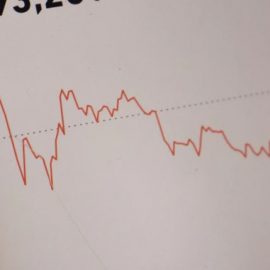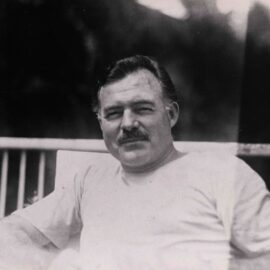

This article is an excerpt from the Shortform book guide to "Friends, Lovers, and the Big Terrible Thing" by Matthew Perry. Shortform has the world's best summaries and analyses of books you should be reading.
Like this article? Sign up for a free trial here.
When did Matthew Perry relapse back into drugs and alcohol? How did the show Friends ending affect his sobriety?
In his memoir Friends, Lovers, and the Big Terrible Thing, Matthew Perry claimed that it was difficult to keep a steady career after the hit show Friends ended. Unable to find another show to fill the Friends void, Perry went back to harmful substances to cope.
Continue reading to learn more about Perry’s relapse after Friends.
Life After Friends
After Friends, Perry tried to grow beyond Chandler, the role he had become synonymous with. He focused on dramatic work and even received award nominations for a movie he starred in, The Ron Clark Story. However, none of the TV shows he worked on after Friends were successful.
(Shortform note: Perry’s decision to branch out into dramatic work was a way for him to break out of his typecasting rut, a pitfall of fame that affects many successful actors.)
With no real purpose to keep him sober, Matthew Perry relapsed and continued unhealthy patterns of behavior worsened. We’ll explore how he continued to abuse substances even after a couple of near-death experiences, and how he pushed away any woman who got close to him.
Relapse, Rehab, Recover, Repeat
After Friends ended, Perry’s addiction accelerated. In 2013 he went into rehab for the third time. During that stay, he found that helping the other residents have fun made him feel useful. However, his counselor questioned why he was having fun at rehab and pointed out that he enjoyed the chaos that addiction created in his life. At first, Perry was offended by this remark, but then he found that there was some truth to it.
During that same rehab stay, he had an epiphany. He didn’t want to invite anyone to family and friends night at the center because he didn’t want to put any of his loved ones through another ordeal related to his addiction. But then he asked himself why he didn’t give himself the same courtesy. He concluded that he needed to permit himself to let go of the inner conflicts that kept him trapped in addiction. But the realization didn’t lead to him applying the lessons learned right away, and he eventually relapsed.
After leaving rehab, he got involved in activism. He advocated for the use of drug courts that would allow drug offenders to be sent to rehab facilities instead of jail. He also got into business with his AA sponsor creating treatment homes in LA. However, that business failed and it ruined his relationship with his sponsor.
Repeating Patterns in Relationships
In his forties, Perry wanted a serious relationship, but he kept pushing the women who loved him away. At one point, he fell in love with two women at the same time. When he decided to break up with one of them and try to make it work with the other one, his fear of intimacy intensified. To dull the fear, he started doing drugs again until his girlfriend realized what was happening and left him.
He also almost got married a couple of times. He had a girlfriend for several years and decided to ask her to marry him. To do so, he commissioned a painting of the two of them and planned a romantic proposal. But when the time came to ask the question, he couldn’t bring himself to do it. They broke up not long after. Then, during COVID, he proposed to another girlfriend when he was under the influence of drugs because he was afraid to be alone during the pandemic. When he got sober, he realized what he had done and broke up with her.
| A Pattern of Avoidance As we noted earlier, Perry’s patterns are characteristic of avoidant attachers. In Attached, Levine and Heller explain that avoidant attachers employ several techniques to maintain some emotional distance from their partners. These techniques, also known as deactivating strategies, are thoughts or behaviors the avoidant attacher uses to keep their independence in the relationship and avoid getting too close, such as consistently prioritizing alone time over time with their partner. In Perry’s case, those techniques included breaking up before a relationship got serious or favoring casual relationships. If you’re an avoidant attacher, recognizing and combating your deactivating strategies can help you have a happy relationship. Remember that distancing yourself from your partner may damage the health of your relationship. One strategy Levine and Heller recommend is to second-guess your negative thoughts about your partner: Is it really a problem, or are you trying to push your partner away? |

———End of Preview———
Like what you just read? Read the rest of the world's best book summary and analysis of Matthew Perry's "Friends, Lovers, and the Big Terrible Thing" at Shortform.
Here's what you'll find in our full Friends, Lovers, and the Big Terrible Thing summary:
- Actor Matthew Perry's autobiography about health, loneliness, and addiction
- Words of hope for those who are currently struggling with substance abuse
- A look into Perry's childhood, his time on Friends, and his life after Friends







What proof does the author have for all theese thing she said about matty
Hello, the information in this article was sourced from Matthew Perry’s memoir “Friends, Lovers, And the Big Terrible Thing.” You can find our guide to his book here if you’re interested in learning more.